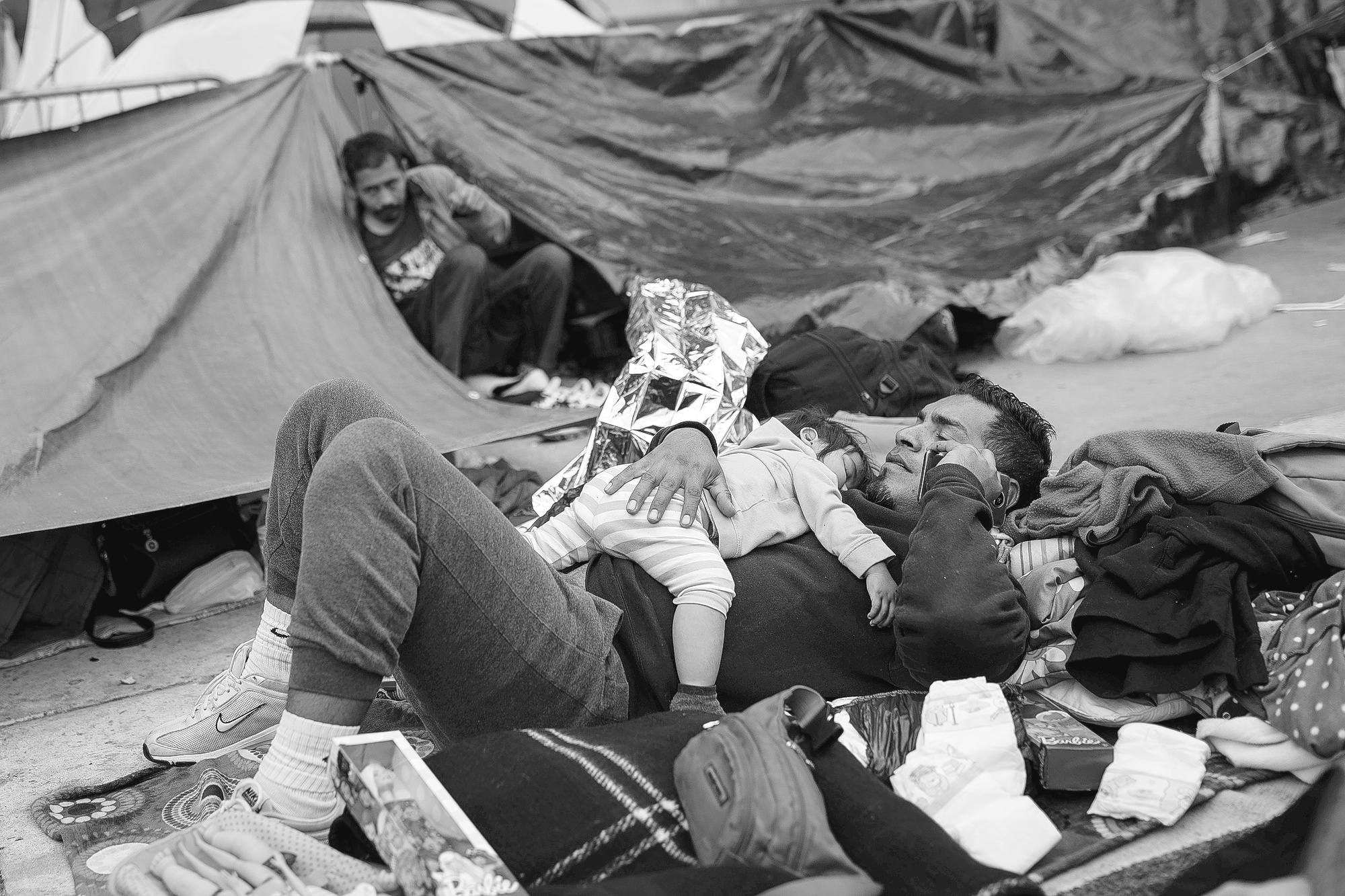
By ELLIOT SPAGAT
Associated Press
TIJUANA, Mexico (AP) — U.S. border inspectors allowed in the first wave of Central American asylum-seekers to enter the country for processing Monday after a temporary impasse over lack of space to accommodate them. U.S. Customs and Border Protection said it processed hundreds of asylum-seekers in the previous week, many of them Mexican, which contributed to a bottleneck that led inspectors to turn away caravan members when they arrived late Sunday afternoon. The agency didn’t say how many caravan members were allowed in, but organizers said there were eight.
About 140 others were still waiting in Mexico to turn themselves in at San Diego’s San Ysidro border crossing, the nation’s busiest, said Alex Mensing, project organizer for Pueblo Sin Fronteras, which is leading the caravan. “The spirits are high, there was good news for everybody,” Mensing said on the Mexican side of the crossing, moments after learning that some were allowed in. The Central Americans allowed in after the monthlong journey across Mexico may face a longer journey ahead. Some parents may be separated from their children and be detained for many months while their asylum cases are pending.
Asylum-seekers are typically held up to three days at the border and turned over to U.S. Immigration and Customs Enforcement. If they pass an asylum officer’s initial screening, they may be detained or released with ankle monitors while their cases wind through immigration court, which can take years. Nearly 80 percent of asylum-seekers passed the initial screening from October through December, but few are likely to win asylum.
The denial rate for El Salvadorans seeking asylum was 79 percent from 2012 to 2017, according to Syracuse University’s Transactional Records Action Clearinghouse.
Hondurans were close behind with a 78 percent denial rate, followed by Guatemalans at 75 percent. Trump administration officials have railed against what they call “legal loopholes” and “catch-and-release” policies that allow people seeking asylum to be freed while their cases are adjudicated. Vice President Mike Pence, on a California border tour Monday, said the caravan was “a direct result of our weak immigration laws and our porous border” and a “deliberate attempt to undermine the laws of this country and the sovereignty of the United States.” Attorney General Jeff Sessions has pledged to send more immigration judges to the border if needed and threatened criminal prosecution. On Monday, the Justice Department said it filed illegal entry charges against 11 people identified as caravan members.
Asylum-seekers didn’t appear to be thrown off the by the delay. Elin Orrellana, a 23-year-old pregnant woman from El Salvador, said she is fleeing the violent MS-13 street gang, a favorite target of both Sessions and Trump because of their brutal killings in communities in the United States. She said her older sister had been killed by the gang in El Salvador, so she is attempting to join other family members in the Kansas City area. “Fighting on is worth it,” she said as she camped out Sunday for chilly night outside the border crossing. Customs and Border Protection has room for about 300 people at the San Diego border crossing.
“As in the past when we’ve had to limit the number of people we can bring in for processing at a given time, we expect that this will be a temporary situation,” the agency said.
During a surge of Haitian arrivals at the San Diego crossing in 2016, Customs and Border Protection required people to wait more than five weeks in Mexico. Since then, smaller upticks of Mexican asylum-seekers have caused delays of several hours.



















